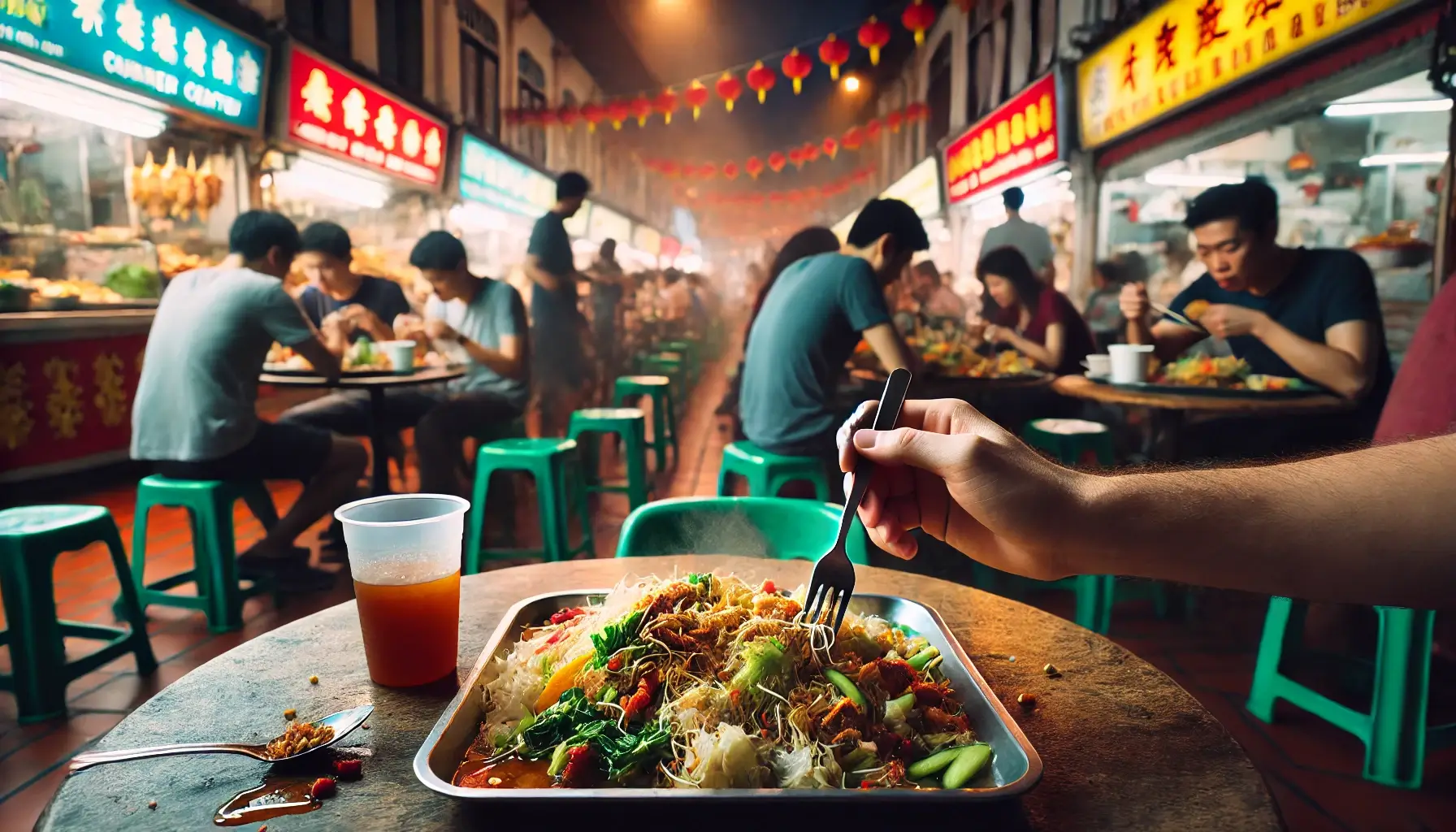Introduction
Chinatown hawker centers are a treasure trove of delicious and affordable street food. These bustling food markets serve a wide variety of traditional and modern dishes, attracting locals and tourists alike.
But what happens to the leftover food? While many might dismiss leftovers as waste, some individuals have mastered the art of consuming Chinatown hawker leftovers. This article delves into the culture, benefits, and ethical considerations of consuming these leftovers while maintaining hygiene and sustainability.
Understanding Chinatown Hawker Leftovers

Chinatown hawker leftovers refer to uneaten food that remains at food stalls after the day ends. Some leftovers come from customers who leave portions of their meals unfinished, while others come from unsold food that vendors can no longer sell the next day. Instead of going to waste, these leftovers can be repurposed in various ways.
The Tradition of Food Sharing and Sustainability
Food sharing is not a new concept. Many cultures practice food redistribution to minimize waste and help those in need. In Chinatown hawker centers, some individuals and community groups collect leftover food to ensure it does not go to waste. This sustainable practice helps reduce environmental impact and supports those facing food insecurity.
Benefits of Consuming Chinatown Hawker Leftovers
1. Reducing Food Waste
One of the biggest advantages of consuming leftovers is minimizing food waste. A significant amount of perfectly edible food gets discarded daily. By consuming Chinatown hawker leftovers, people contribute to a more sustainable food system.
2. Cost-Effective Meals
For budget-conscious individuals, consuming leftovers can be a cost-saving measure. Many people, including students and low-income individuals, turn to leftovers as an affordable food source.
3. Promoting Sustainability
Sustainability is a key concern in modern society. When people consume leftovers, fewer resources are wasted in producing and transporting new meals. This reduces the carbon footprint of food production and supports eco-friendly practices.
4. Encouraging Responsible Consumption
Mindful eating practices encourage people to take only what they need and avoid unnecessary waste. Consuming leftovers teaches individuals to respect food and appreciate its value.
How to Safely Consume Chinatown Hawker Leftovers
1. Choosing the Right Leftovers
Not all leftovers are safe to eat. It is important to pick food that has been stored properly and appears fresh. Avoid food that has been exposed to heat for long periods or looks spoiled.
2. Proper Storage Techniques
Leftovers should be stored in clean, airtight containers and kept at the correct temperature. Refrigeration helps prevent bacterial growth, making the food safer to eat.
3. Reheating and Cooking
Reheating food to the right temperature kills bacteria and enhances its flavor. Using a microwave or stovetop to heat leftovers thoroughly is crucial to prevent foodborne illnesses.
4. Hygiene Considerations
Always wash hands before handling leftovers and use clean utensils to avoid contamination. Proper hygiene practices are essential for safely consuming Chinatown hawker leftovers.
Ethical Considerations
1. Respect for Vendors
Before taking leftovers, it is important to respect the vendors. Some hawkers might not approve of their food being taken after closing. It’s best to ask for permission or look for community initiatives that support food redistribution.
2. Community Food Programs
Many organizations work to collect and redistribute leftover food. Supporting these programs ensures that food reaches those who need it most while maintaining dignity and hygiene standards.
3. Reducing Stigma
Consuming leftovers should not be seen as a sign of poverty or desperation. Instead, it should be viewed as a responsible and sustainable choice that benefits both individuals and the environment.
The Role of Technology in Reducing Food Waste

With advancements in technology, many mobile apps now connect individuals with surplus food. Apps such as Too Good To Go and Olio allow people to find and collect excess food from hawker centers, reducing waste and promoting sustainability.
Real-Life Stories: People Who Consume Chinatown Hawker Leftovers
Many individuals have embraced consuming Chinatown hawker leftovers as a lifestyle choice. Some do it for economic reasons, while others focus on sustainability. Sharing these experiences helps normalize the practice and encourages others to consider it.
Conclusion
Exploring the art of consuming Chinatown hawker leftovers is about more than just food—it’s about sustainability, community, and ethical responsibility. By making conscious choices about how we consume food, we can reduce waste, save money, and support a greener future.
Whether you are a food enthusiast, a budget traveler, or an advocate for sustainability, understanding how to safely and ethically consume Chinatown hawker leftovers can lead to a more mindful way of living.
